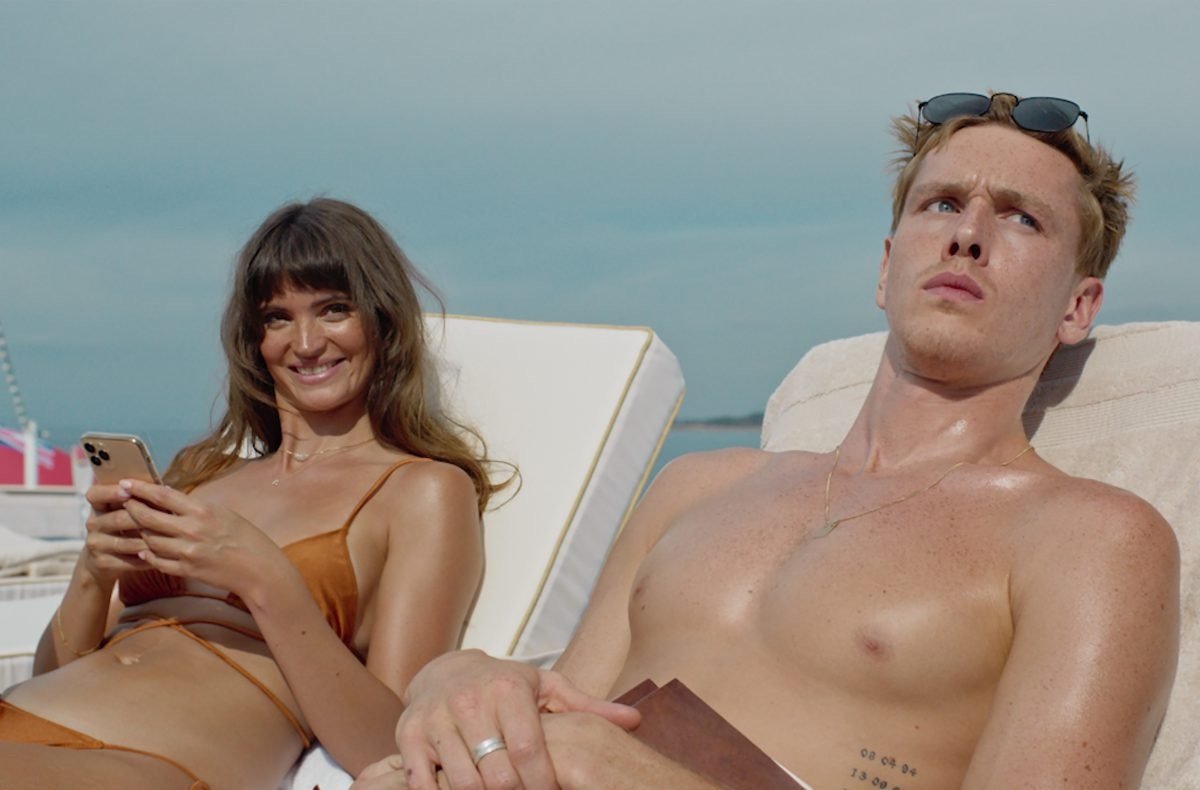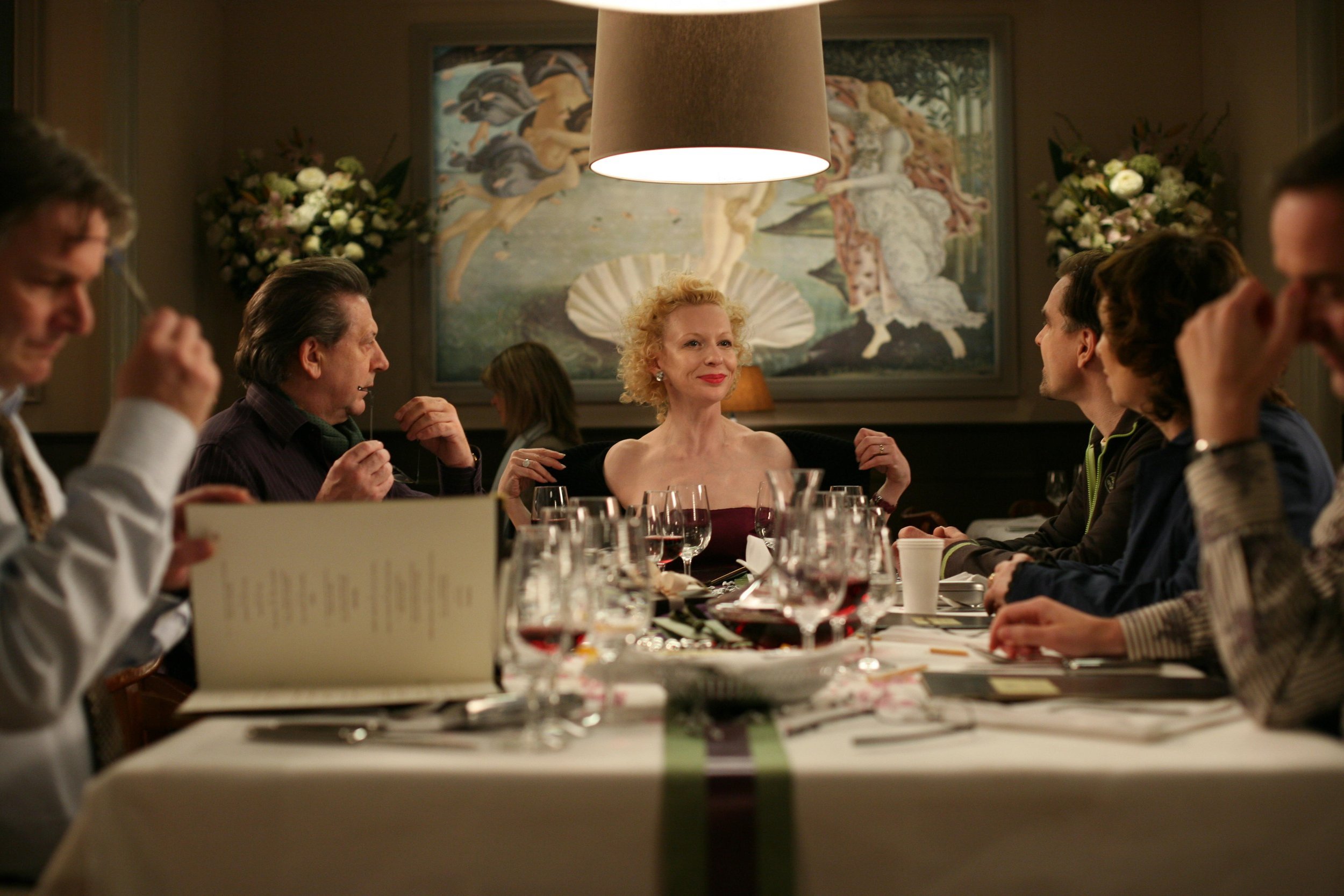'Triangle of Sadness' Review: A Reminder to Eat the Rich and Laugh While You Do It [TIFF 2022]
AN EQUALLY BITING AND HILARIOUS SATIRE CRITICIZING THE OBSCENELY WEALTHY, STACKED WITH GREAT PERFORMANCES THAT WILL YOU KEEP YOU LAUGHING (AND CRINGING).
Living in a post-Parasite world, cinematic critique of capitalism, the upper class, and the impact of money has become more common – it may almost seem mainstream, but it is extremely relevant with themes that remain prevalent, and likely, relatable. Parasite, Bong Joon-ho’s best picture winner, captured the attention of millions, and the criticism of class structure, which has become common definitely owes sits prevalence to that film. Triangle of Sadness, while very different in its approach, also focuses on picking apart Western capitalist society. This particular focus has perhaps become a little trendy, but still can pack a punch when successfully delivered.
In this case, Ruben Östlund’s Triangle of Sadness, winner of this year’s Palme d’Or, the highest award given at the Cannes Film Festival, effectively shocks the viewer, and toes the line between entertainment and pure insanity, and in the end, uses satire to promote this critique of the ridiculously wealthy. Interestingly, Parasite also was awarded the Palme d’Or in 2019 – so clearly, there are several people who enjoy the insurgence of capitalist critiques within the art community. These viewers are happy to continue to watch intelligent minds dissect different aspects of the upper-class; fashion, influencer culture, old and new money, it’s all fair game and it’s all important.
This film is broken into three parts, all chronologically connected, but so startlingly different from each other. It progresses from a snapshot into a romantic relationship of two of the main characters, to a luxury cruise that erupts into chaos, to another jarring location change. At the end of the film, it almost feels funny to think of the beginning again, and how the lives of these characters are so wildly altered. What seemed so significant to them, what they lived for – completely changed, rendered completely irrelevant.
Harris Dickinson and Charlbi Dean star as the main couple, Carl and Yaya, and while the two of them are responsible for the first third of the film, they are soon joined by a cast stuffed with great performances. Alone, Dickinson and Dean capture their characters so well, fighting about what we all fight about – money. However, their careers as models and their bank accounts make them a little more gawk worthy, and a little (or a lot) harder to relate to. At this point, it already becomes clear that writer and director Östlund will be poking fun at the people that fight about money just to fight, instead of because they need to.
Dickinson and Dean are models, with the latter also an influencer, but once they board the cruise that fills the second act, the viewer meets other, richer characters with other, more unique jobs. Yaya’s influencing gets the couple free tickets for this luxury cruise, but they find themselves surrounded by people who proudly purchased their own tickets, or (even better) had them paid for by a rich family member. This includes Zlatko Burić as Dimitry, a “seller of shit”, and his coattail-riding family, Henrik Dorsin as Jorma, an app coder, and weapons manufacturers Clementine and Winston, played by Amanda Walker and Oliver Ford Davies. Self-obsessed and extravagant, the cruise struggles to hold all of the personalities of these obscenely wealthy caricatures.
However, most importantly and, for the rich, most irrelevantly, the yacht is filled with crew members – employees. Woody Harrelson plays Captain Thomas, an alcoholic self-proclaimed Marxist, which was unsurprisingly an entertaining performance. He’s joined by many others, including Paula, played by Vicki Berlin, a micro-managing, guest-pleasing manager, and Abigail, played by Dolly de Leon, a bathroom cleaner with so much potential.
The acting is utterly believable, with each actor really coming into their character. This is one of the first several movies for many of these actors, which just points to the presence of some real, raw talent found in this cast. Kudos must also be given to Östlund who took this ensemble piece and clearly communicated exactly what he needed from it in order for the story to be successful.
Dickinson’s Carl, who tries so hard to convince himself, and the audience watching, that he’s not a “bad one”, is perhaps the worst of all. His privilege is painful to watch, and at the end of it all, he becomes nothing more than the resource he can offer. He is just as selfish, just as self-serving, and just as manipulative as he sees his wealthy companions. At the beginning of the film, an interviewer moves around a room stuffed with shirtless male models, waiting for an audition. The interviewer brings up the gender differences in modelling, questions whether the parents of a model support him knowing he is paid a fraction of what a female model makes. Carl is there, he is listening, and how can he help but feel so indignant? His girlfriend, a beautiful model, and him, criticized for his “Triangle of Sadness” – does he need Botox? Still, he promises it isn’t about the money, it never is, it’s just about being fair. The irony oozes from the screen in this particular bit of cinematic satire, and overall, Dickinson gives one of my favourite performances of the year.
The film is certainly a delight. Besides a few scenes that dragged a little too long, with a few jokes wearing themselves out on screen (maybe a little self-indulgent of Östlund, who also acted as one of the editors), the editing is well done, effectively transporting the viewer into the scene.
The cinematography, done by Fredrik Wenzel, a common collaborator for Östlund, is gorgeous. The use of the camera is admirable, and paired with the colours, sets, and clothing, it’s a beautiful thing to look at, despite how often you’re looking at something not meant to be beautiful, or something just the opposite.
Sometimes Triangle of Sadness can be messy, but that seems to be the point – this is not meant to glamourize the lifestyle at all. It shows façades can go a long way, but beneath it all, we’re all human beings – competitive, selfish, gross human beings.
This is Ruben Östlund at his craziest, his most explicit, his most in-your-face gross-out shock-value, and audiences are going to love it.




